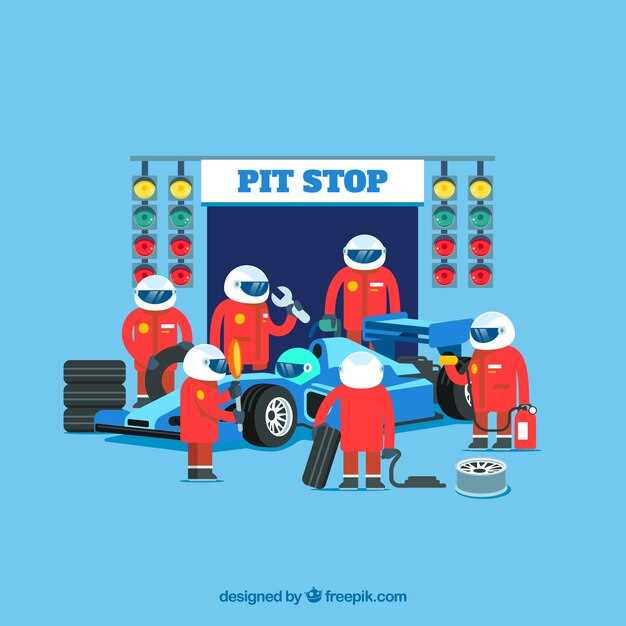
How to Avoid Detonation in Race Engines
- George Harris
- 0
- Posted on

Race engines are engineered for performance, operating under extreme conditions where every detail matters. Among the critical factors affecting engine reliability and output is detonation, a phenomenon that can lead to catastrophic failure if not managed properly. Understanding the nuances of detonation and implementing effective prevention methods is essential for any racer aiming for success on the track.
Detonation, often referred to as “knock,” occurs when the air-fuel mixture in the combustion chamber ignites prematurely. This unwanted ignition can result in a series of damaging pressure waves, leading to engine knock and potential destruction of components. To maintain optimal performance, it is crucial to recognize the signs of detonation and take proactive steps to prevent it.
This article will explore practical tips that racers and performance enthusiasts can employ to avoid detonation in race engines. From optimizing fuel selection to fine-tuning ignition timing, we will delve into actionable strategies that enhance engine longevity while maximizing power output. By focusing on these critical areas, you can ensure your engine operates smoothly, withstands higher levels of stress, and delivers the performance you desire.
Understanding Engine Parameters to Prevent Detonation

Preventing detonation in race engines requires a deep understanding of various engine parameters that can influence combustion dynamics. One of the critical factors is the air-fuel ratio (AFR). An optimal AFR ensures complete combustion; too lean an mix can lead to elevated combustion temperatures and potential knocking. Generally, a slightly richer mixture is recommended for high-performance systems to mitigate the risk of detonation.
Another essential factor is the ignition timing. Advancing ignition timing can improve power output but can also lead to pre-ignition and detonation if set too aggressive. It’s vital to find a balance through careful tuning, often using a dynamometer to evaluate performance across different RPM ranges to find the optimal timing.
Compression ratio also plays a significant role in detonation resistance. Higher compression ratios increase thermal efficiency but also raise the likelihood of knocking. Understanding the fuel’s octane rating is crucial; high-octane fuels can withstand greater compression without detonating, allowing for performance enhancements without sacrificing engine integrity.
Additionally, engine cooling is crucial in preventing detonation. Elevated engine temperatures can decrease the threshold for knocking. Implementing robust cooling systems, including upgraded radiators and oil coolers, helps maintain optimal temperatures during high-performance use, reducing the chances of overheating and detonation.
Finally, monitoring cylinder pressures and exhaust gas temperatures (EGTs) provide valuable insights into engine health. Tools such as knock sensors and EGT gauges allow real-time monitoring and adjustment of engine parameters to avoid conditions conducive to detonation. Understanding and continually optimizing these parameters can substantially improve engine reliability and performance on the racetrack.
Fuel Selection and Tuning Strategies for Optimal Performance
Selecting the right fuel is crucial for maximizing performance and preventing detonation in race engines. High-octane fuels are typically preferred as they resist knocking and allow for more aggressive tuning. Fuels with additives can offer better combustion stability and cleaner engine operation, but care should be taken to ensure compatibility with engine materials.
When choosing fuel, consider the octane rating, which indicates the fuel’s ability to withstand compression without igniting prematurely. For naturally aspirated engines, using higher octane fuels enables more advanced ignition timing, enhancing horsepower. In forced induction systems, optimal fuel choice combined with proper boost levels is equally vital in preventing detonation.
Tuning strategies should focus on adjusting the air-fuel mixture and ignition timing to achieve the ideal combustion characteristics. A lean mixture can promote higher temperatures and increase the risk of knocking, while a rich mixture may reduce power output. Aim for a stoichiometric ratio, but fine-tune it according to engine behavior during testing to find a balance that supports both performance and safety.
Utilizing an engine management system allows for precise adjustments and monitoring of parameters such as knock sensors, exhaust gas temperature (EGT), and air-fuel ratio (AFR). Implementing data logging during track sessions can provide insights into engine performance and help in making informed tuning decisions.
Lastly, always perform regular tuning maintenance and periodic checks on fuel quality to ensure consistent performance. Variability in fuel composition can affect combustion behavior, leading to issues like detonation if not monitored closely. By following these strategies, you can optimize race engine performance while effectively avoiding detonation.
Monitoring and Diagnosing Detonation Symptoms in Real-Time

Real-time monitoring of detonation symptoms is crucial for maintaining engine performance and longevity in race conditions. One of the most effective methods is to use an advanced data acquisition system that captures engine parameters such as knock sensor readings, cylinder pressure, and exhaust gas temperatures.
Implementing high-fidelity knock sensors can significantly enhance detection capabilities. These sensors convert vibrations caused by detonation into electrical signals, which are then analyzed in real-time. It is advisable to position the sensors close to the engine block to maximize sensitivity.
Cylinder pressure transducers offer another layer of monitoring by directly measuring pressure fluctuations within the combustion chamber. Abnormal spikes in pressure can indicate detonation, allowing engineers to adjust fuel mixture and timing parameters dynamically.
Another effective method is utilizing an exhaust gas temperature (EGT) monitoring system. An increase in EGT can be a precursor to detonation. Combining EGT data with other parameters can help in diagnosing the onset of detonation before it escalates.
Real-time data logging allows for the comparison of historical performance data against current conditions. Identifying trends in engine performance helps in recognizing patterns leading to detonation, facilitating proactive adjustments before symptoms worsen.
Incorporating software that provides predictive analytics can also assist in detonation prevention. These systems analyze the collected data to forecast conditions that may lead to detonation, allowing teams to make informed decisions rapidly.
Additionally, visual indicators such as engine knock lights or a dashboard display that alerts crew members to detected detonation events can be invaluable during racing. Immediate alerts enable crews to take corrective actions, such as adjusting the air-fuel mixture or reducing boost pressure to prevent engine damage.
Regular calibration and maintenance of monitoring equipment are essential to ensure reliability and accuracy. Keeping a detailed log of performance metrics aids in diagnosing issues and refining strategies for detonation avoidance over time.
